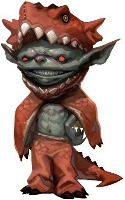Gary H. said: I think if you could use clipping paths though it can be connected to the image and would work when resizing. Especially if you use EPS or AI files AI is a proprietary format owned by Adobe, and there is no means to properly identify an EPS file because of the variety of ways it can be previewed. Further, while a number of programs will happily convert vector graphics to EPS, the EPS file itself is actually a PostScript program; many exporters create a PS the builds a raster image, not a vector image, and there's potential harm in someone uploading an arbitrary script file. As for AI files, even if someone out on the internet has figured out the specification for it (a spec which could change without notice), the cheapest way to (legally) get Illustrator costs twice as much as a Mentor subscription (US$19.99/mo). With the exception of Corel's Paint Shop Pro (US$60), I can't find any graphics editor that supports all versions of AI files; most can only read them (not write), and many can only handle the older versions (which were essentially EPS files). Finally: the only vector graphics file format that is at all likely to be compatible across the Roll20 userbase is SVG, as it's the only kind of vector art that has native browser support. However, as of April 2014, you can't draw an SVG file on an HTML5 canvas (what the Roll20 VTT is made of) on all browsers. This makes it rather difficult to use for DL walls. It does work in both Chrome and IE11, so it will likely spread to other browsers going forward, but we're not there yet.



